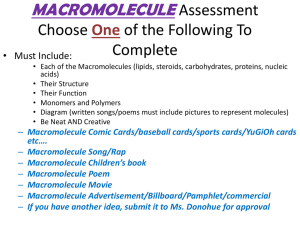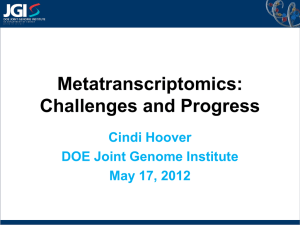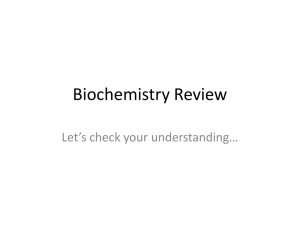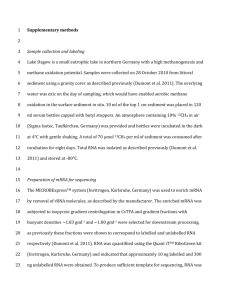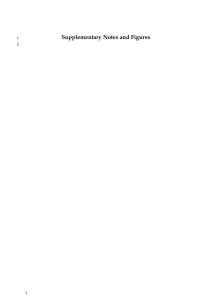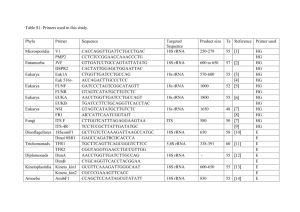emi12329-sup-0003-ms1
advertisement
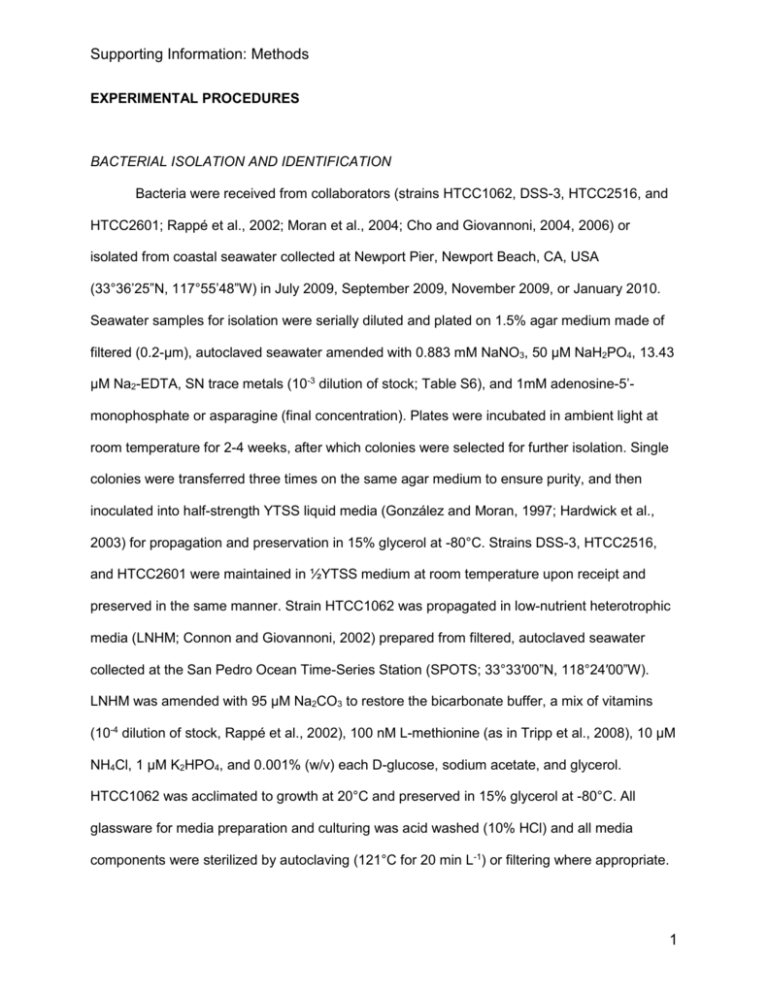
Supporting Information: Methods EXPERIMENTAL PROCEDURES BACTERIAL ISOLATION AND IDENTIFICATION Bacteria were received from collaborators (strains HTCC1062, DSS-3, HTCC2516, and HTCC2601; Rappé et al., 2002; Moran et al., 2004; Cho and Giovannoni, 2004, 2006) or isolated from coastal seawater collected at Newport Pier, Newport Beach, CA, USA (33°36’25”N, 117°55’48”W) in July 2009, September 2009, November 2009, or January 2010. Seawater samples for isolation were serially diluted and plated on 1.5% agar medium made of filtered (0.2-μm), autoclaved seawater amended with 0.883 mM NaNO3, 50 μM NaH2PO4, 13.43 μM Na2-EDTA, SN trace metals (10-3 dilution of stock; Table S6), and 1mM adenosine-5’monophosphate or asparagine (final concentration). Plates were incubated in ambient light at room temperature for 2-4 weeks, after which colonies were selected for further isolation. Single colonies were transferred three times on the same agar medium to ensure purity, and then inoculated into half-strength YTSS liquid media (González and Moran, 1997; Hardwick et al., 2003) for propagation and preservation in 15% glycerol at -80°C. Strains DSS-3, HTCC2516, and HTCC2601 were maintained in ½YTSS medium at room temperature upon receipt and preserved in the same manner. Strain HTCC1062 was propagated in low-nutrient heterotrophic media (LNHM; Connon and Giovannoni, 2002) prepared from filtered, autoclaved seawater collected at the San Pedro Ocean Time-Series Station (SPOTS; 33°33′00”N, 118°24′00”W). LNHM was amended with 95 μM Na2CO3 to restore the bicarbonate buffer, a mix of vitamins (10-4 dilution of stock, Rappé et al., 2002), 100 nM L-methionine (as in Tripp et al., 2008), 10 μM NH4Cl, 1 μM K2HPO4, and 0.001% (w/v) each D-glucose, sodium acetate, and glycerol. HTCC1062 was acclimated to growth at 20°C and preserved in 15% glycerol at -80°C. All glassware for media preparation and culturing was acid washed (10% HCl) and all media components were sterilized by autoclaving (121°C for 20 min L-1) or filtering where appropriate. 1 Supporting Information: Methods Bacteria isolated from Newport Beach, CA, were identified by 16S ribosomal RNA (rRNA) gene sequences. Genomic DNA was isolated from overnight cultures of each bacterial strain using an UltraClean Microbial DNA Isolation kit (MoBio, San Diego, CA, USA) and served as template for PCR targeting the near-complete 16S rRNA gene with primers pA forward (5’AGA GTT TGA TCC TGG CTC AG-3’) and pH reverse (5’-AAG GAG GTG ATC CAG CCG CA3’) (Edwards et al., 1989). PCR products were purified using a NucleoSpin Extract II kit (Macherey-Nagel, Düren, Germany) and sequenced with the same primers by Laragen, Inc. (Culver City, CA, USA) on an ABI Prism 3730 Genetic Analyzer (Applied Biosystems, Foster City, CA, USA). Consensus sequences were taxonomically classified using the SINA alignment service from the Silva rRNA database (http://beta.arb-silva.de/aligner/; Pruesse et al., 2012). Nucleotide sequences have been deposited in the GenBank database under accession numbers KC990022-KC990031. ANALYTICAL METHODS: MACROMOLECULE CONTENT Nucleic acids and proteins were released from filter samples in a solution of Tris buffer (5 mM Tris, pH 8.0, Ambion) and RNA preservative (nucleic acid samples only; saturated ammonium sulfate solution of 0.5M EDTA, 1M sodium citrate, and 700 g L-1 ammonium sulfate). Samples were mechanically lysed using a MP FastPrep-24 bead beater (MP Biomedicals, Santa Ana, CA, USA) at 5.5 m/s for 2 minutes in 1-minute increments, incubating the samples on ice for 5 minutes in between. The supernatant was collected for analysis after centrifugation (10,000 x g for 4 minutes) at 4°C to pellet cell and filter debris. Three identical 96-well microplates were prepared for every assay, one for detection of each macromolecule. Prediluted standards included with each kit were further diluted with supernatant from media blanks to bracket expected concentrations of each macromolecule (0-250 ng mL-1 λ dsDNA, 0-500 ng mL-1 E. coli rRNA, and 0-5 μg mL-1 BSA protein). Each fluorophore was diluted 1:200 in the appropriate buffer and added to triplicate wells of samples and standards. Plates were 2 Supporting Information: Methods incubated at room temperature in the dark for 3 or 15 minutes (for nucleic acids and proteins, respectively) prior to measuring fluorescence at the specified excitation and emission values on a Biotek Synergy4 microplate reader (BioTek, Winooski, VT, USA). Macromolecule concentrations were calculated based on standard curve regressions of fluorescence vs. known standard concentrations (λ dsDNA, E. coli rRNA, or BSA protein). DNA standards were linear, while an asymptotic regression model best described RNA standards, and an exponential regression model best described protein standards. The limit of detection for each macromolecule was estimated as the mean of triplicate determinations from background media (blank) samples plus 3 times the standard deviation. The limit of detection for DNA in our assays was 0.41 ± 0.18 ng, RNA was 2.3 ± 0.98 ng, and protein was 67.4 ± 24.1 ng. We also calculated the coefficient of variation (CV) for each macromolecule as the ratio of the standard deviation to the mean of triplicate determinations from all values of the standard curves. For our assays, the CV for DNA was 3.2 ± 0.8%, RNA was 3.8 ± 1.7%, and protein was 4.8 ± 1.4%. All sample protein concentrations were divided by a quench coefficient of 0.2862, which was the slope of the observed vs. expected values for the Mor224 spiked controls averaged over all assays (n = 6). Only the 2 closest analytical replicates were used to determine the mean macromolecular content for each sample. Extraction efficiency for DNA using this assay was estimated at ~50%, based on the known genome sizes of DSS-3, HTCC2516, and HTCC2601 (http://www.roseobase.org), assuming one genome per cell and 100% retention of cells on the filter (Table S5); however, the nucleic acid and protein values reported were not corrected for this estimation. 3 Supporting Information: Methods REFERENCES Cho, J.-C. and Giovannoni, S.J. (2004) Oceanicola granulosus gen. nov., sp. nov. and Oceanicola batsensis sp. nov., poly-beta-hydroxybutyrate-producing marine bacteria in the order “Rhodobacterales.” Int. J. Syst. Evol. Microbiol. 54: 1129–36. Cho, J.-C. and Giovannoni, S.J. (2006) Pelagibaca bermudensis gen. nov., sp. nov., a novel marine bacterium within the Roseobacter clade in the order Rhodobacterales. Int. J. Syst. Evol. Microbiol. 56: 855–9. Connon, S.A. and Giovannoni, S.J. (2002) High-throughput methods for culturing microorganisms in very-low-nutrient media yield diverse new marine isolates. Appl. Environ. Microbiol. 68: 3878–3885. Edwards, U. et al. (1989) Isolation and direct complete nucleotide determination of entire genes. Characterization of a gene coding for 16S ribosomal RNA. Nucleic Acids Res. 17: 7843– 7853. González, J.M. and Moran, M.A. (1997) Numerical dominance of a group of marine bacteria in the alpha-subclass of the class Proteobacteria in coastal seawater. Appl. Environ. Microbiol. 63: 4237–4242. Hardwick, E.O. et al. (2003) Temporal dynamics of three culturable gamma-Proteobacteria taxa in salt marsh sediments. Aquat. Ecol. 37: 55–64. Moran, M.A. et al. (2004) Genome sequence of Silicibacter pomeroyi reveals adaptations to the marine environment. Nature 432: 910–3. Pruesse, E. et al. (2012) SINA: accurate high-throughput multiple sequence alignment of ribosomal RNA genes. Bioinformatics 28: 1823–9. Rappé, M.S. et al. (2002) Cultivation of the ubiquitous SAR11 marine bacterioplankton clade. Nature 418: 630–3. Tripp, H.J. et al. (2008) SAR11 marine bacteria require exogenous reduced sulphur for growth. Nature 452: 741–4. 4

